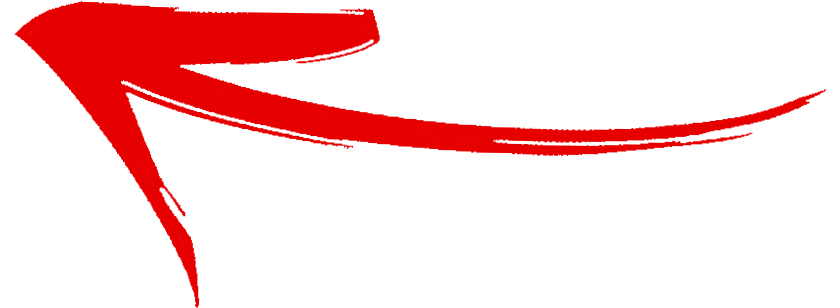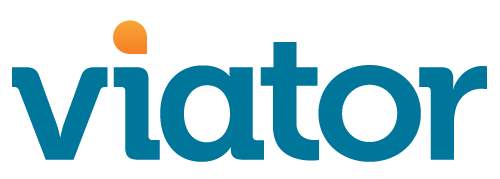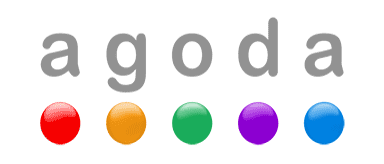When in Seoul, South Korea, you’ll quickly notice that the big city’s most prominent features are shopping and dining. Combine it with a rich history of over two centuries, the fascinating Korean culture, beautiful green parks, and stunning scenery sprinkled with mountain peaks, and you get yourself a fabulous city with so many things to do. While time might be limited, seeing everything Korea has to offer might seem like an impossible thing to do. One way of exploring the city’s shopping and dining, as well as its history and the Korean culture is by visiting a local market. Gwangjang Market, previously known as Dongdaemun Market, is a traditional Korean market, spreading on over 42,000 square meters (452084 square feet), and counting more than 5,000 stores. Check out this comprehensive guide to Gwangjang Market, Seoul.
We handpicked these listings carefully, considering (wherever possible) Superhost status, recent guest reviews, location, accommodation type, prices, availability of dates, decor, and amenities. The image galleries get refreshed with the latest updates regularly. They were last updated on April 08, 2024.
Gwangjang Market information
Gwangjang Market
Address: 88 Changgyeonggung-ro, Jongno 4(sa)-ga, Jongno-gu, Seoul
Opening hours: 9am - 5pm (daily)
Official website: Gwangjang Market
Board of tourism: Visit Seoul
Things to do/highlights

Gwangjang Market is where authentic Korean food, South Korean culture, traditions, and shopping live under the same roof. The best way to visit the market is at a slower pace, with no rush, as there are so many flavors, scents, and traditions to take in.
Street food
Many things are going on at the Gwangjang Market and many types of merchandise being sold, but the food is the central element of the market. The biggest section of the market is dedicated to what looks like a street food court. Here, both visitors and locals can buy fresh products from fish and meat to fruit and vegetables, eat the most popular Korean dishes, and watch locals cook right there on the spot.
A cultural experience
Gwangjang Market is the oldest traditional market in Seoul, dating back to 1905 when it first opened its doors. Many of the shops are family businesses, so it is an interesting place to learn about Korean culture, traditions, and history.
Events at the market
As unusual as it may sound, Gwangjang Market is sometimes home to different types of events, including some as uncommon as Hanbok Fashion Show, where visitors, merchants, and people of all ages gather to see the show, and some even participate as models.
What to eat

After a walk around the market, you’ll realize that everything looks so delicious and good, that you’ll find it so hard to decide what to eat. We’re here to recommend some of the traditional Korean dishes that are most popular at the Gwangjang Market.
Mayak Gimbap
Gwangjang Market is famous for selling Mayak Gimbap, a type of rice rolls. You’ll easily find the mini rice rolls as you’ll notice piles and piles of them. They’re made of different types of vegetables, wrapped in tiny rolls, and sprinkled with sesame seeds and sesame oil. It’s, most likely, the sesame flavor that makes them so unique and delicious.
Tteokbokki
Yet another type of rice roll, Tteokbokki is sticky rice cooked in a red chili sauce. They’re a popular treat among younger Koreans and are best served hot and fresh.
Bindaetteok
Bindaetteok is a type of fried mung bean pancake. A hit delicacy for Seoul’s residents, it’s usually served with a bowl of kimchi and soy and onion sauce on the side. It is crispy on the outside, and soft on the inside, and while it might be a bit too greasy, it’s worth the try.
Seoul Gwangjang Market food tour (from USD 64.49)
A trip to one of South Korea’s oldest food markets is a must-add to the bucket list of every visiting traveler, especially one who happens to be visiting the megacity for the first time. If you believe the area’s wider selection of delicacies seems too overwhelming, let this food tour guide you every step of the way.
This tour takes on a unique spin by providing you with a stimulating card, which gets stamped every time you successfully eat each staple dish on the list. From classics such as kimbap to the spiciest of delicacies, you’re guaranteed to have a lot of fun. If you complete the list, you’ll get a chance to win Korean souvenirs and, of course, bragging rights!
Seoul Gwangjang Market Unique Food Tour United States
Gwangjang Market Food Tour including Lunch
Duration: 4 hours
Things to buy

It’s not just food that you’ll find at the Gwangjang Market, although the food alone is undoubtedly worth the visit.
Vintage clothing
With more than 100 years of history, it’s no surprise that Gwangjang Market is a popular spot for vintage clothing shopping. You’ll find many young people looking for unique vintage fashion. We recommend you look for handmade and quality silk or linen goods.
Hanbok
While we’re still in the clothing department, don’t miss out on the opportunity of buying a hanbok - a traditional Korean dress in bright colors, simple lines, and usually worn at traditional or somewhat formal festivities and events.
Souvenirs
A visit to the Gwangjang Market can be an excellent opportunity for souvenir shopping. You can choose a hanbok, high-quality silk, home decorations, and traditional Korean goods to take home as a reminder of your time in Seoul.
Travel tips

Prices in Seoul
Seoul is a rather expensive city when it comes to street food. Expect to pay somewhere around 10 to 20 USD per person if you’re eating in this market. However, we recommend it; it will be money well spent on an authentic Korean dish.
How to get there

Metro
One way that we recommend to get to the Gwangjang Market is by public transportation. Take the metro to Jongno-5 station, take Exit 9 or 8, and you’ll arrive right at the market entrance.
Walk
If the weather is nice, you can also walk to the market. It’s an approximately 50-minute walk from Seoul Station.
Taxi
If you want to visit the Gwangjang Market and think of going there by car, you can take a taxi. The most popular taxi providers in Seoul are Kakao Taxi or International Taxi.
Uber
If you’re unsure about taking a taxi and explaining the driver where you want to go, just order an Uber on your phone, put in the address, and you should be at the market within 10 minutes.
Places to stay near Gwangjang Market
1. Minimalist studio unit for solo goers and couples (from USD 100)
Figuring out how to get to Gwangjang Market can be quite tricky, especially if you’re a first-timer staying in an accommodation far away. To save yourself unnecessary trouble, book this vacation rental only a few minutes from one of Seoul’s popular food markets.
Ideal for couples or solo travelers, it offers an outstanding range of self-service features, which include a washing machine and a well-stocked kitchen. If you’re keen on cooking up a feast and want to stock up on some groceries, Gwangjang Market is right across the street. In the morning, freshen up in the bathroom, which comes with a state-of-the-art toilet, basic toiletries, and even skincare essentials.
Jongno-gu, Seoul, South KoreaAccommodates: 2
2. Well-equipped home in a quiet location (from USD 45)
This cozy home accommodation is perfect for tourists who value some peace and serenity amidst the chaos of Seoul’s city streets. Tucked in a narrow alley about 50 m (164 ft) from the main road, it is impressively stocked with handy facilities for a self-sustaining stay.
You will have access to the suite’s standard amenities, such as the kitchen, a queen-size bed, a washer, and even a vacuum cleaner. Essential items and materials are thoughtfully equipped in both the kitchen and bathroom. After your shopping spree in Gwangjang Market, entertain yourself with the suite’s WiFi connection, as well as a TV equipped with cable.
Ssangnim-dong, Jung-gu, Seoul, South KoreaSuperhost
Accommodates: 2
Top guest reviews
Amenities & Room:
good position near subway station apartment was comfortable with good amenities and great air-conditioningthe apartment was clean and had everything i needed kitchenware ac washing machine and everything worked perfectlyCleanliness:
it was clean and comfortable to stay inalso very clean and you have everything you needthe apartment is very clean and an efficient spacethe house was very clean with all necessities providedwe had a great stay here so convenient clean and comfortableHost:
host was responsive and kindthe host was also very kind and accommodating :)great host who’s very responsive and answers all our questions with patiencethe host responded to my questions quickly and was very helpfulhost was also very responsive and friendlyRead more reviewsLocation:
great location next to ddp subway stationlocation’s great walking distance to the metrothe location of the place was pretty goodquite a big apartment with great locationlocation is fantastic if you’re using the subway and bus we found it to be very convenient
3. Hotel Kukdo (from USD 142)
At Hotel Kukdo, convenience is the key. Apart from being close to Gwangjang Market, this jam-packed hotel is also surrounded by tons of exciting facilities and establishments within the Jung-gu district. From bars and eateries to bus stops and metro stations, the hotel guarantees you’ll have everything within your reach.
Many of Hotel Kukdo’s rooms come with large windows that overlook the bustling city skyline. A welcome range of toiletries, linens, and essential amenities are to be expected in each accommodation. In its mission to be the place for all, Hotel Kukdo offers special suites for families, as well as ladies-only floors for those who need a safe space to unwind.
Hotel Kukdo
Address: 164, Eulji-ro, Jung-gu
Frequently asked questions about the guide to Gwangjang Market
History
Get Trip101 in your inbox
Unsubscribe in one click. See our Privacy Policy for more information on how we use your data














































Create an account to